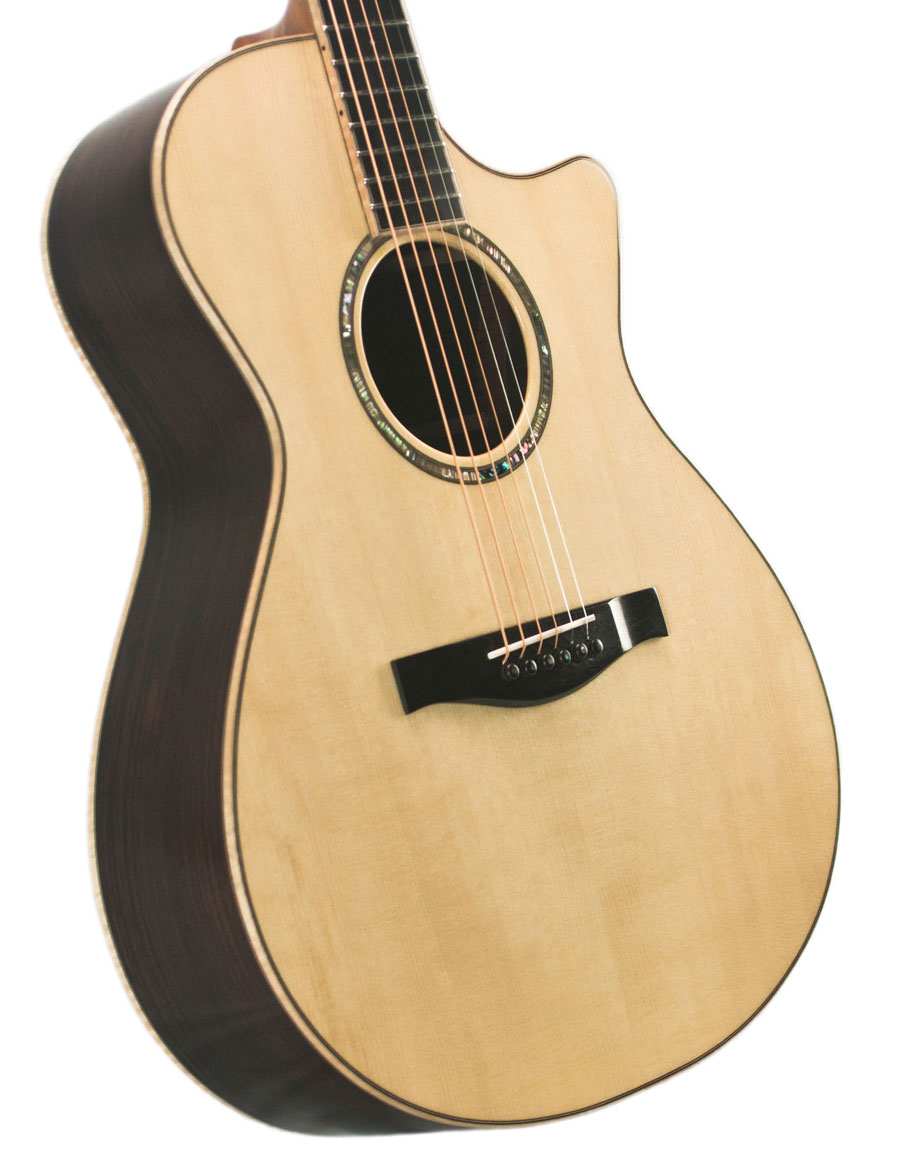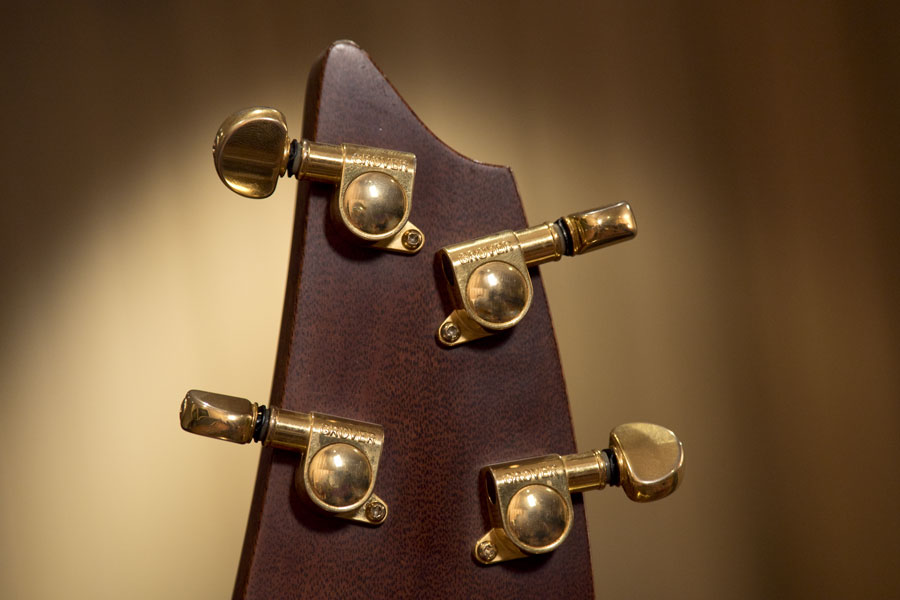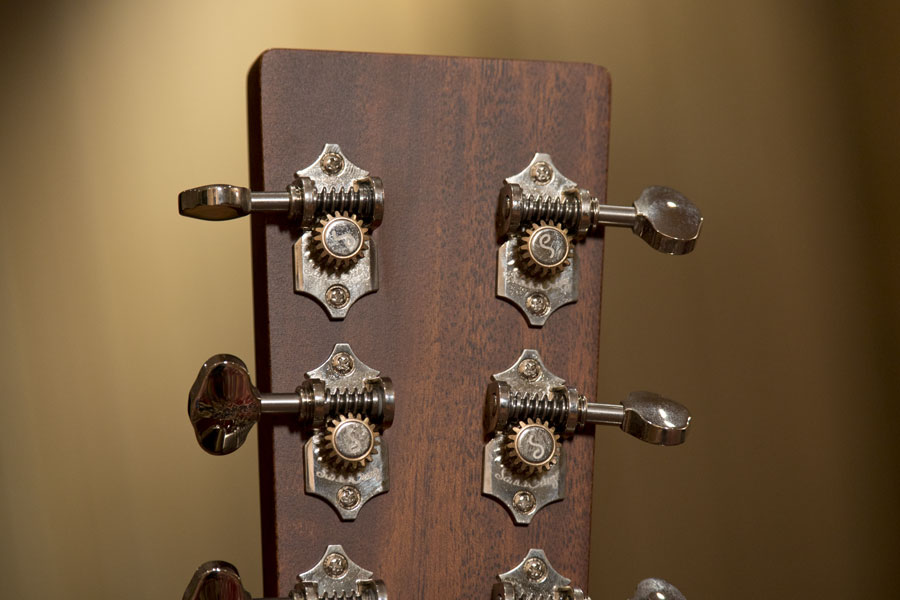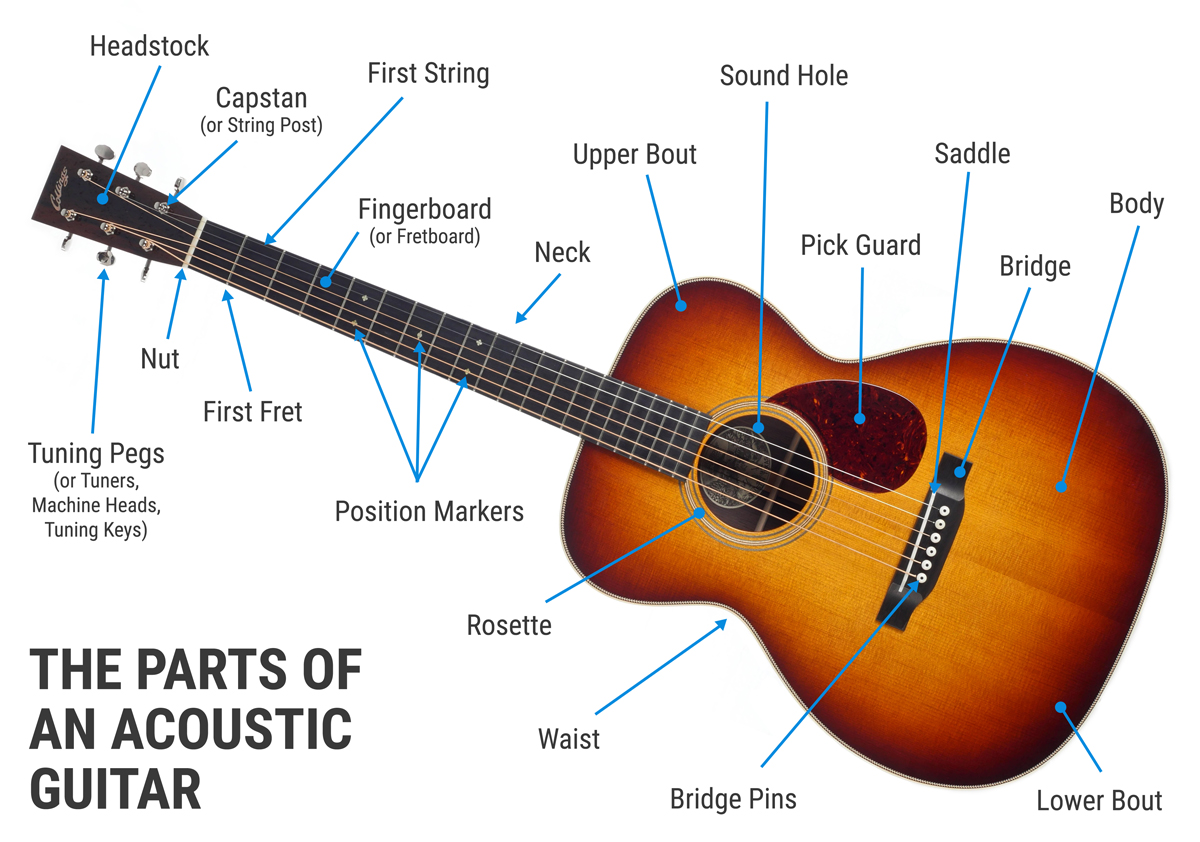
When you’re shopping with us for the perfect acoustic guitar, whether you’re considering volume, tone, comfort, or any other feature, there are a few details our specialists will inquire about. For beginners and seasoned players alike, we’ll want to know what you’ve owned or played before and what you did and didn’t like about these guitars, including specs like scale length and nut width. We may even ask you to measure a few things. To make the process easier, here is a quick overview of the parts of an acoustic guitar.
Body
The body of an acoustic guitar is made up of the soundboard, or top, and the back and sides. The soundboard is the part that vibrates to produce sound, which is why top tonewoods are considered so important, but the back and sides contribute to the tone as well (read more about how top vs. back and sides affect tone in our article “Your Tone Begins with Your Top”). From top to bottom, the body is divided into the upper bout, the waist, and the lower bout. Bouts are measured across the width of the guitar, with the lower bout being slightly larger than the upper bout.
There are many types of guitar body sizes and shapes, including models with cutaways, or scooped indentations in the guitar’s upper, treble-side bout (the treble side is the side of the first string). In general, a bigger box means a bigger sound, but some guitars will surprise you with qualities not typical to their body style. (We will cover this topic in greater depth in a future post.)
Neck
The neck of the guitar projects from the main guitar body and includes the fretboard, frets, headstock, and truss rod (which stabilizes the forward curve, or “relief,” of the neck, keeping it from bending due to the tension of the strings). Necks have different shapes, from more of a V shape to a C shape and every point in between. The rigidity of a guitar’s neck is indicative of the quality of the instrument. Some give can be desirable, as bending the neck slightly to change the pitch of a note is a common technique in blues and rock.
Fingerboard (a.k.a. Fretboard)
Laminated to the front of the neck is the fingerboard or fretboard, by far one of the most important parts to consider when selecting a guitar, as it affects comfort, playing style, and tone. It is generally made from a different type of wood as the back of the neck and is fretted. Ebony, rosewood, and maple are typical woods used, though synthetics such as Richlite are another option.
Frets
Guitar frets are raised parts on the fingerboard of the guitar that extend across the full width of the neck, and are generally made of metal. Frets divide the guitar neck into intervals, each fret representing one semitone of an octave. Pressing the string against the fret shortens the string to the length between the fretted point and the bridge, changing the note and making it easier to achieve correct notes than a non-fretted fingerboard. Frets come in different shapes and types, and will wear over time, which makes fret maintenance important.
Position Markers
Guitars often have dots or custom marks inlaid into the fretboard as a visual aid to the player. These markers are usually on the third, fifth, seventh, ninth, twelfth, and fifteenth frets, with the twelfth (octave) fret often being different than the others (for example, two dots instead of one). Most classical guitars do not have position markers.
Nut
The thin piece of material that supports the strings on the end of the neck of the guitar closest to the headstock is called the nut. This important piece, usually made of ebony, ivory, brass, or synthetic materials, holds the strings at the proper height from the fingerboard and is notched to set the spacing between them. Why “nut”? The word likely derives from the German Nut, meaning slot or groove.
Headstock
At the top of the neck is the headstock or peghead of the guitar, which holds the tuning pegs and keys that allow the guitar to be tuned. Headstocks can be straight or angled, and come in many different shapes depending on maker and model.
Capstan (a.k.a. String Post)
Capstans or string posts are cylinders on the headstock with a hole in the center through which guitar strings are inserted. They are connected to the whole of the machine head mechanism, traditionally mounted at the center of a pinion gear.
Tuners (a.k.a. Tuning Keys, Machine Heads, or Tuning Pegs)
Tuners or machine heads rotate the capstan to wind the string around it by way of a pinion gear and a worm gear, increasing or decreasing tension in the string to raise and lower pitch. Machine heads vary from instrument to instrument. On nylon or classical guitars, the worm gears are usually exposed, while on steel string guitars they are generally placed inside of a casing with lubrication. Vintage and vintage-recreation guitars have open-gear tuners, since enclosed gears were not common until after World War II.
Sound Hole
Sound holes help with sound projection, though it is a misconception to think this is the main source of a guitar’s sound. The entire surface area of the guitar top, or soundboard, emanates sound, with the hole allowing the soundboard to freely vibrate, and acting as a sort of escape valve for vibrating air. (For this reason, we usually avoid pointing a mic directly into the sound hole when recording guitar. Watch our X/Y recording masterclass for more info.)
Sound holes are usually centered in the body and circular, but some builders have distinctive innovations in sound-hole design, such as McPherson’s unmistakable offset sound holes that are designed to allow greater vibration in the center of the guitar top.
Rosette
The decorative inlaid pattern around the sound hole is called the “rosette”: originally a round, stylized flower or botanical design derived from the diminutive for “rose” in French. Rosette patterns range from modern and simple to ornate, and builders often choose a specific rosette design to help brand their lines.
Pick Guard
The pick guard or scratch plate of the guitar does exactly what its name indicates: protect the soundboard from being scratched or damaged by a pick. Pick guards can be made of any number of materials, such as mother of pearl or pearloid, plastic, metal, acrylic, and exotic woods. They are very thin so as not to reduce the vibration of the soundboard.
Bridge
The bridge of the guitar supports the strings and transmits their vibration to the soundboard. Strings produce a very low sound on their own because they displace only a tiny volume of air as they vibrate. The vibration of strings therefore needs to be conducted to a larger, resonant surface, and a bridge is the usual way of achieving this on stringed instruments. Bridges may consist of a single material, usually wood for acoustic guitars, or they may be made of several parts and include other materials such as plastic or bone. On classical and steel string guitars, the bridge is glued to the top.
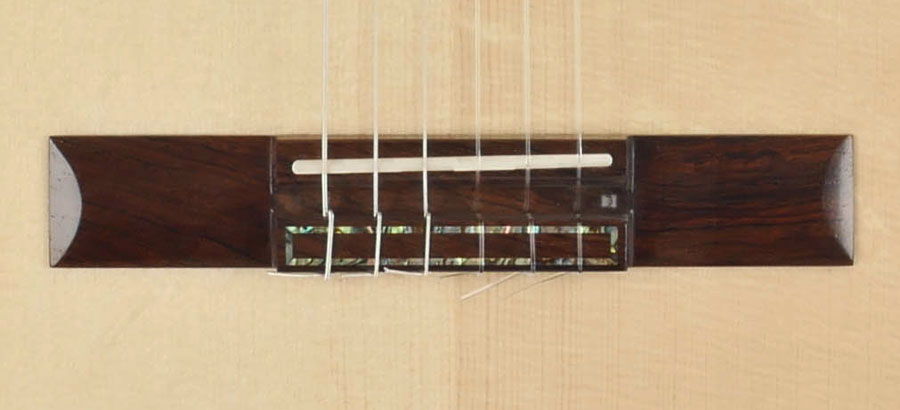
Strings Tied to Bridge on a Nylon String Guitar
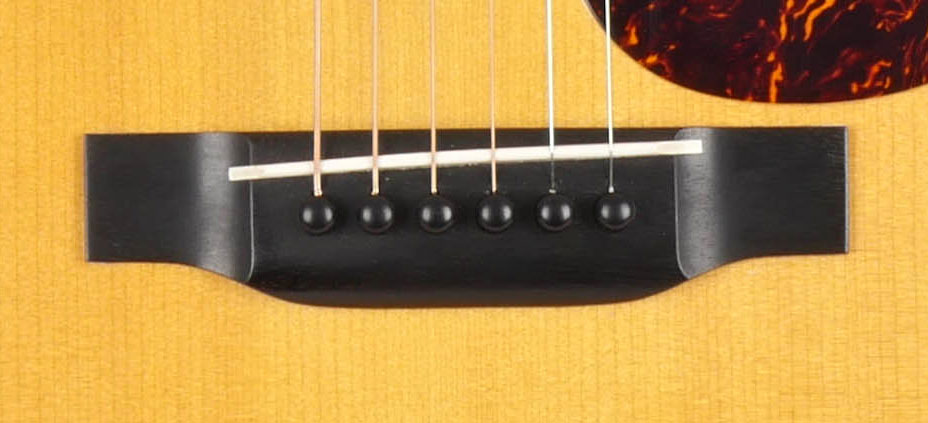
Steel String Guitar Black Ebony Bridge and Bridge Pins
Bridge Pins
Most steel string guitars use bridge pins to position the string precisely on the bridge. They are usually made of wood, bone, or synthetics. The material used affects the tone of the guitar, making it tend towards bass or treble. Classical guitars do not normally use bridge pins, though some exceptions exist, and instead use a tie block, which originated in Spain. The bridge pin system, which comes from the Viennese tradition of luthiery, was brought to North America by C.F. Martin in the 1830s. Steel string guitars were developed in the 20th century, and today bridge pins are mostly associated with steel string guitars.
Saddle
The guitar saddle is a think piece of bone or plastic attached to the bridge that lifts the strings to the desired height and transfers vibration through the bridge to the soundboard. The height of the saddle raises or lowers “action”—the distance between your strings and the fingerboard. The saddle is usually slightly angled on the bridge to improve intonation, which is, incidentally, why you should not measure the scale length of your guitar from the nut to the saddle (string length), and should use this method instead.
If you have any further questions about the parts of an acoustic guitar, please don’t hesitate to give us a shout. Our guitar specialists live for talking gear and would love to share their knowledge with you!


